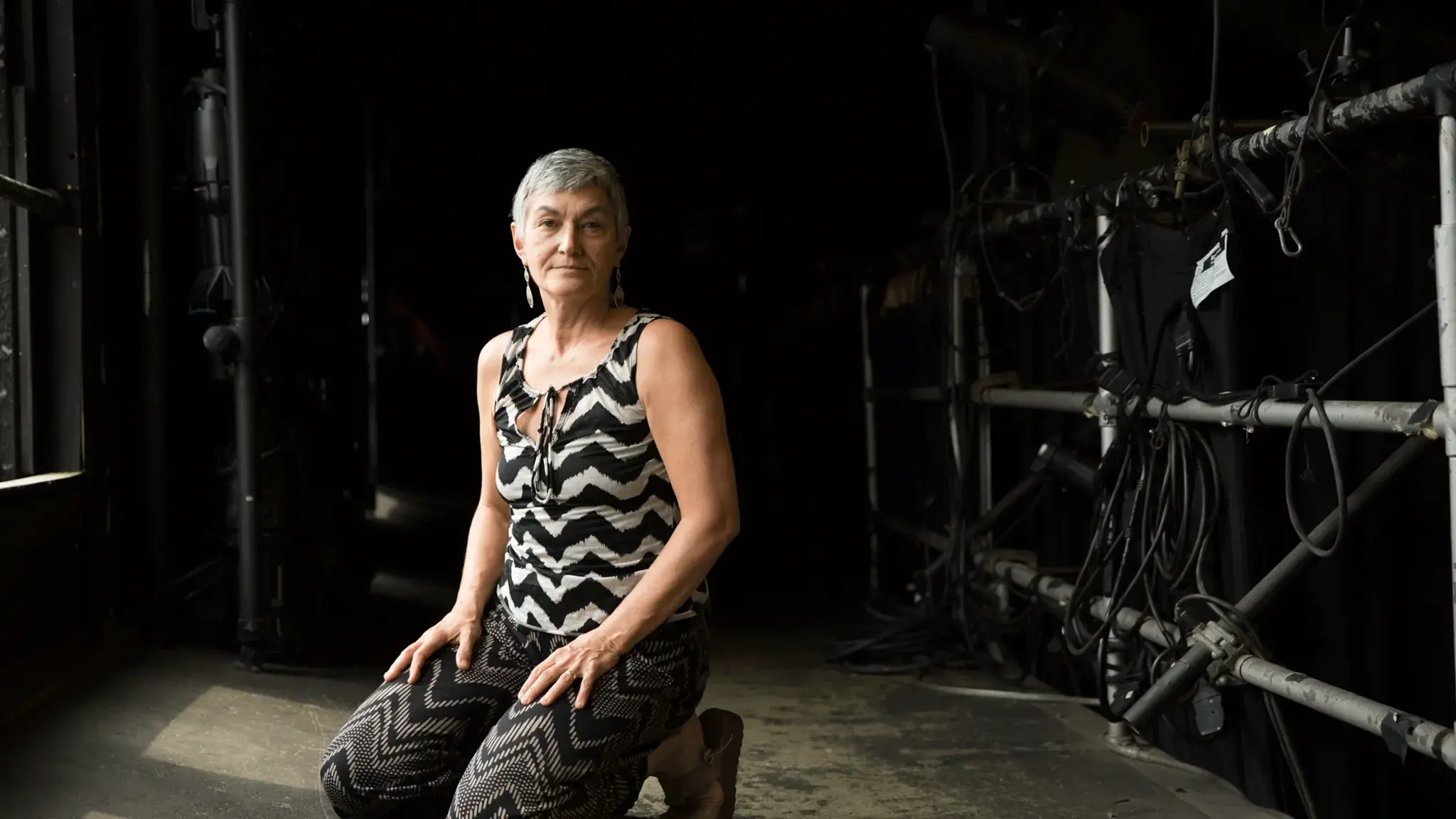

Our “Fellows Friday” series focuses on the artistic lives of our Pew Fellows: their aspirations, influences, and creative challenges.
This week, we speak to choreographer Merián Soto (2015), whose 40-year career in performance has been marked by a concern for the body—most recently manifested in a somatic, conceptual, and process-based practice that investigates the living body and its relationship to consciousness. Soto has created the Center-funded Branch Dance Series, SoMoS, and Wissahickon Park research project, as well as Historias (1992), which the National Endowment for the Arts recognized in its American Masterpieces program. From May 14-15, Soto will perform in the Center-funded, large-scale performance piece, Supper, People on the Move, by Silvana Cardell at La MaMa in New York City. In October, Soto will participate in the Center-supported multimedia dance theater work salt soul by Jungwoong Kim, premiering at Asian Arts Initiative (dates forthcoming).
Why do you choose to work and live in Philadelphia? In your experience, what makes this art scene distinctive?
When I first moved to Philadelphia in 1999 to assume a position at Temple University Department of Dance, I was amazed by the warm welcome I received from the artistic and dance community. The scene here is sized and relaxed enough for people to know and support each other; it’s also vibrant and replete with opportunities for exchange and exposure. I’ve been able to earn a living as an artist/educator, to provide for my family, as well as grow my work. The Wissahickon woods in Northwest Philadelphia have been a refuge. “Branch Dancing” came to me there.
What is your most treasured possession?
My family beach house among almond trees in Puerto Rico, a place for retreat and reunion.
What was the first artistic experience that really mattered to you? Did it influence your approach to your work?
My mother, Andy Soto, was a visual artist, painter, and ceramist. She struggled with the demands of raising four children and pursuing her art, but she always produced work; always found joy in creativity. That tenacious persistence has stayed with me and inspired me to continue my work in the everyday.
What books are currently on your bedside table?
Attunement Through the Body by Shigenori Nagatomo (1992).
Your performance work has been marked by a concern for the body and its relationship to consciousness. What inspires you to create this type of work?
The lived experience of the body/mind moving, sensing, playing, inquiring, is all about consciousness and awareness. I enjoy jumping into the rabbit hole.
What single ethical consideration most impacts the decisions you make as an artist?
Truth.
Do you think about your legacy and, if so, how does your thinking about it affect your practice?
I do. Lately, I’ve been engaged in retrospective projects that bring back artistic products and knowledge of 40-plus years of making and producing performance work, and over 20 years of teaching. My newest project, “Modes!” documents Modal Practice, the improvisational methodology that has been at the center of my work since early on in my career. Combining video and live performance, I aim to capture embodied knowledge, “written” in the bodies of highly skilled performers. You can catch a glimpse of a recent performance here.
>>Further reading: Merián Soto on Site, Improvisation, and Embodiment in SoMoS